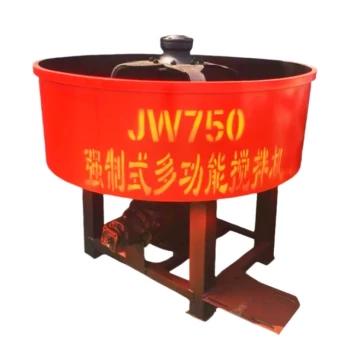At its core, a windlass is a specialized winch on a ship designed to deploy and retrieve heavy equipment. Its primary and most common purpose is to manage the ship's anchor and the associated chain or rope. It provides the mechanical advantage necessary to handle immense loads that would be impossible to manage by hand.
The most critical thing to understand is that a windlass is designed to lift the dead weight of an anchor and chain. It is not designed to pull the boat's weight towards the anchor or to break a stubborn anchor free from the seabed.

How a Windlass Creates Lifting Power
A windlass functions by converting rotational force from a motor or manual crank into powerful, controlled linear pulling force.
The Core Mechanism
A windlass uses a system built around a drum or barrel. A chain or cable is wound around this barrel.
When operated, a motor or crankshaft turns the barrel, using gears to multiply the force. This allows a relatively small energy input to lift incredibly heavy weights with precision and control.
Distributing the Load
The system is engineered to distribute the massive strain across its components. The load of the anchor and chain is transferred from the individual links onto the powerful gears and mounting of the windlass itself, protecting the operator and the vessel.
Understanding the Operational Limits
A windlass is a powerful tool, but it is not indestructible. Using it correctly is essential for both the longevity of the equipment and the safety of the crew. Misunderstanding its role is the most common cause of failure.
The Windlass Lifts, The Engine Pulls
The most frequent mistake is using the windlass to pull the boat forward towards the anchor. This puts an enormous strain on the windlass motor, gears, and deck fittings, far exceeding its design for vertical lifting.
The correct procedure is to use the ship's engine to slowly motor towards the anchor's position. The windlass should only be used to take in the slack chain as the boat moves.
Breaking an Anchor Free
Never use the windlass to break out a firmly set or stuck anchor. The immense, sudden force can strip the gears, burn out the motor, or even rip the windlass from its mounting on the deck.
Instead, secure the anchor chain with a chain stopper or snubber. Then, use the boat's engine and momentum to maneuver gently and break the anchor's hold on the seabed.
Ensuring Adequate Power
A windlass motor draws a very high electrical current. Always keep the boat's engine running while operating an electric windlass to ensure a stable power supply from the alternator. Relying on batteries alone can drain them quickly and cause the windlass to fail mid-operation.
A Checklist for Proper Use
Follow these principles to ensure your anchoring process is safe and efficient.
- When deploying the anchor: Use length markers on your chain to know how much scope you have let out, and ensure the chain runs freely from the anchor locker.
- When retrieving the anchor: Always use your boat's engine to move towards the anchor; the windlass should only be lifting the near-vertical weight of the chain and anchor.
- If your anchor is stuck: Secure the chain with a stopper and use the boat's power—not the windlass—to break it free from the bottom.
- For safety and maintenance: Always ensure the end of the anchor chain is securely fastened within the chain locker to prevent accidental loss.
Treating your windlass as a precision lifter, not a brute-force puller, is the key to safe and reliable anchoring for years to come.
Summary Table:
| Purpose | Key Function | Operational Limit |
|---|---|---|
| Anchor Management | Lifts the dead weight of anchor and chain | Not for pulling the boat or breaking anchors free |
| Mechanical Advantage | Converts rotational force into powerful linear pulling | Requires engine power for boat movement |
| Load Distribution | Transfers strain to gears and deck mountings | Avoids strain exceeding vertical lift capacity |
Need a reliable power solution for your marine or construction equipment?
Just as a windlass provides the essential lifting power for safe anchoring, GARLWAY specializes in delivering robust and efficient power systems for demanding applications. We offer a wide range of winches, concrete mixers, and batching plants engineered for durability and performance, trusted by construction companies and contractors globally.
Let us help you power your projects with confidence. Contact our experts today to discuss your specific needs and find the perfect equipment solution!
Visual Guide

Related Products
- Heavy Duty Electric Boat Winch Windlass Anchor
- Warn Winch Windlass Boat Trailer Winch
- Electric Hoist Winch Boat Anchor Windlass for Marine Applications
- Ready Mixer Machine for Construction Ready Mix Machinery
- Portable Cement Mixer with Lift Concrete Machine
People Also Ask
- How does a boat anchor winch work? A Guide to Reliable Anchor Handling
- What are marine electric winches and their characteristics? Key Features for Reliable Maritime Operations
- What is the general user satisfaction with boat anchor winches? A Game-Changer for Boaters
- What are the main benefits of a boat anchor winch? Boost Safety & Efficiency for Your Vessel
- How does the anchor windlass operation sequence work? Master Safe & Controlled Anchor Handling



















